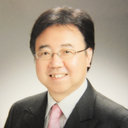The Appropriate Surgical Approach to a Greater Petrosal Nerve Schwannoma in the Setting of Temporal Lobe Edema.
الكلمات الدالة
نبذة مختصرة
BACKGROUND
Facial nerve schwannomas are rare lesions that constitute only 0.8% of all intrapetrous mass lesions. The least frequent lesions are tumors originating in the greater petrosal nerve (GPN). We present a case of a GPN schwannoma with temporal lobe edema in which the patient was operated on using an extradural and intradural approach to prevent complications.
METHODS
A 66-year-old woman with vertigo and abnormal magnetic resonance imaging findings was referred to our department. Computed tomography scan revealed an isodense subtemporal mass with partial rim calcification and petrosal bone apex erosion. Magnetic resonance imaging confirmed a 22-mm left middle fossa lesion with heterogeneous enhancement and edema of the temporal lobe. A left temporal craniotomy to the middle fossa was performed. The initial extradural exploration revealed the tumor to be in the Glasscock triangle, mainly involving the location of the GPN. The tumor was removed through an intradural approach in piecemeal fashion. Finally, using an extradural and intradural middle fossa approach, the tumor was totally removed, leaving the capsule on the middle fossa floor with continuous facial nerve monitoring. The postoperative course was uneventful without complications of xerophthalmia and facial palsy.
CONCLUSIONS
GPN schwannomas are very rare lesions. The extradural and intradural middle fossa approach was used to preserve the tumor capsule around the GPN. Using this technique, one can safely protect the geniculate ganglion and the GPN.


